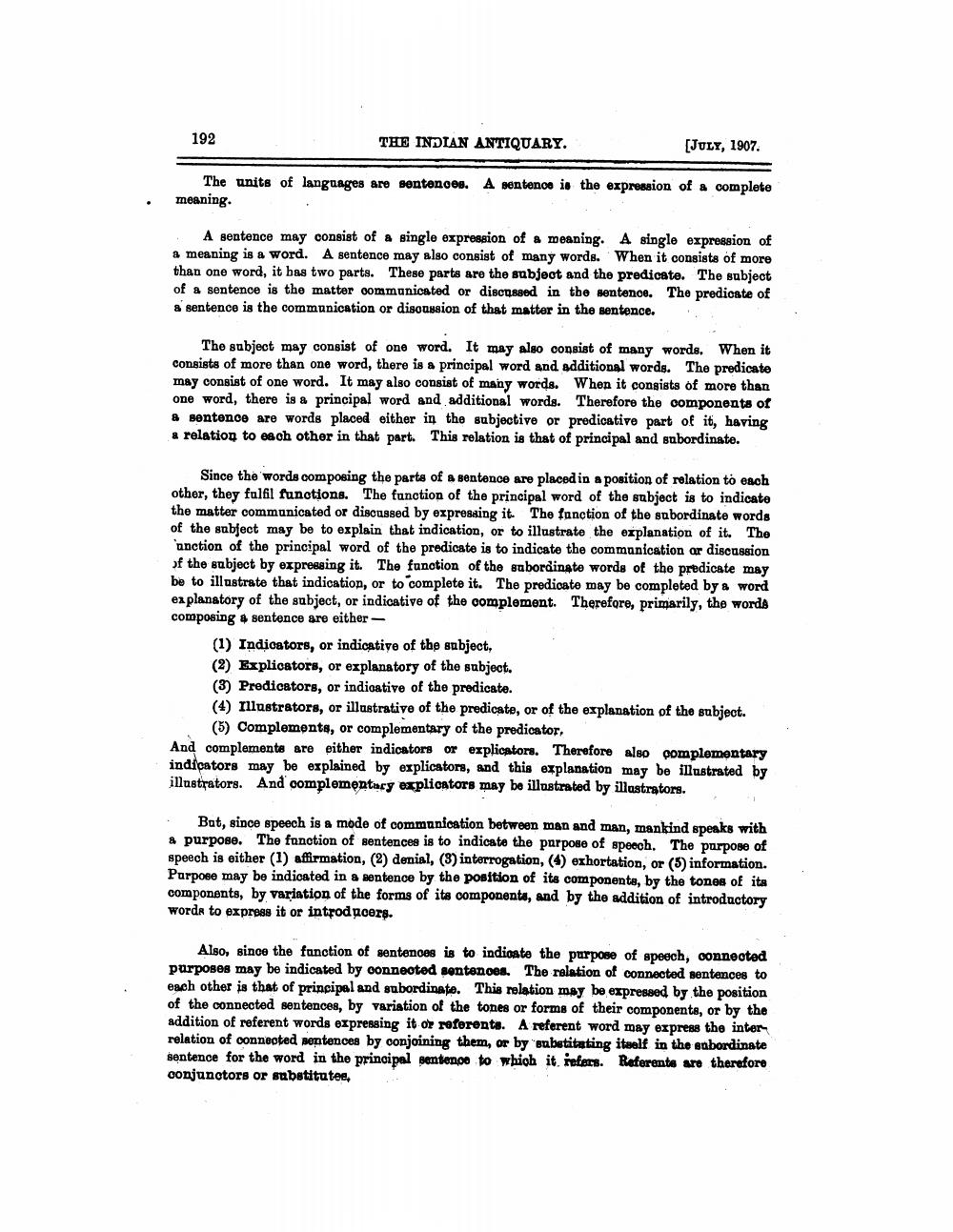________________
192
THE INDIAN ANTIQUARY.
[JULY, 1907.
A sentence is the expression of a complete
The units of languages are sentences. meaning
A sentence may consist of a single expression of a meaning. A single expression of a meaning is a word. A sentence may also consist of many words. When it consists of more than one word, it has two parts. These parts are the subject and the predicate. The subject of a sentence is the matter oommunicated or discussed in the sentence. The predioste of a sentence is the communication or disoussion of that matter in the sentence.
The subject may consist of one word. It may also consist of many words. When it Consists of more than one word, there is a principal word and additional words. The predicate may consist of one word. It may also consist of many words. When it consists of more than one word, there is a principal word and additional words. Therefore the components of 8 sentence are words placed either in the subjective or predicative part of it, having a relation to each other in that part. This relation is that of principal and subordinate.
Since the words composing the parts of a sentence are placed in a position of relation to each other, they fulfil functions. The function of the principal word of the subject is to indicate the matter communicated or discussed by expressing it. The fanction of the subordinate words of the subject may be to explain that indication, or to illustrate the explanation of it. The 'onction of the principal word of the predicate is to indicate the communication or discussion of the subject by expressing it. The function of the subordinate words of the predicate may be to illustrate that indication, or to complete it. The predicate may be completed by a word explanatory of the subject, or indicative of the complement. Therefore, primarily, the words composing sentence are either -
(1) Indicators, or indicative of the subject, (2) Explicators, or explanatory of the subject. (3) Predicators, or indicative of the predicate. (4) Illustrators, or illustrative of the predicate, or of the explanation of the subject.
(5) Complements, or complementary of the predicator, And complements are either indicators or explicators. Therefore also complementary indicators may be explained by explicators, and this explanation may be illustrated by illustrators. And oomplementary explicators may be illustrated by illustrators.
But, since speech is a mode of communication between man and man, mankind speaks with * purpose. The function of sentences is to indicate the purpose of speech. The purpose of speech is either (1) affirmation, (2) denial, (3) interrogation, (1) exhortation, or (5) information. Purpose may be indicated in a sentence by the position of its componente, by the tones of its components, by variation of the forms of its components, and by the addition of introductory words to express it or introducers.
Also, since the fanction of sentences is to indicate the purpose of speech, connected purposes may be indicated by connected sentences. The relation of connected sentences to each other is that of principal and subordinate. This relation may be expressed by the position of the connected sentences, by variation of the tones or forms of their components, or by the addition of referent words expressing it or referente. A referent word may express the interrelation of connected sentences by conjoining them, or by substitating itself in the subordinate sentence for the word in the principal sentence to which it isfers. Referents are therefore conjunctors or substitutee,




